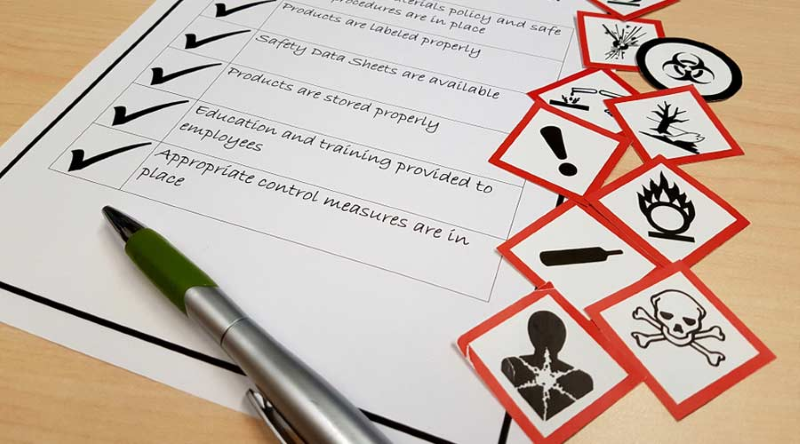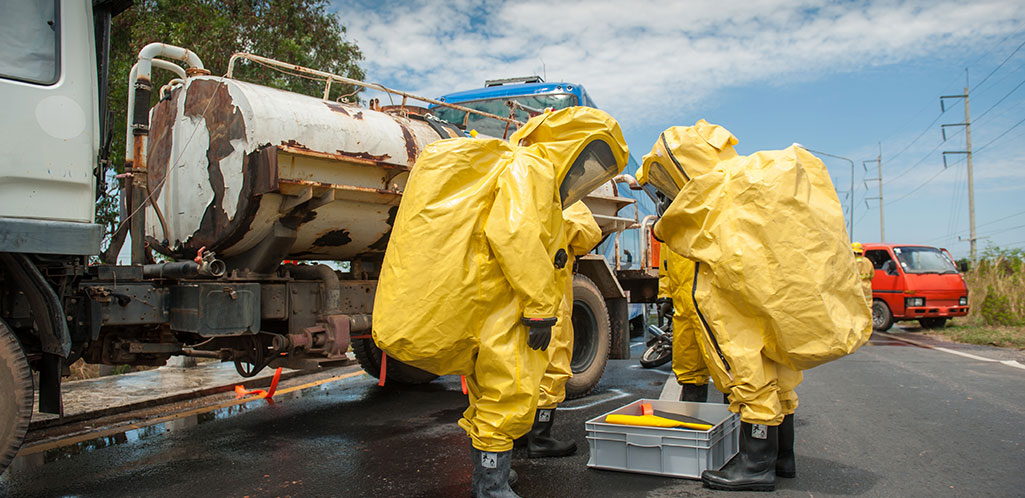
18 Jun 2025
Chemical safety is a cornerstone of responsible laboratory practices, industrial operations, and workplace safety. One of the most critical aspects of handling hazardous chemicals is proper labeling and placarding, as outlined by the Globally Harmonized System (GHS) of Classification and Labeling of Chemicals. GHS placards and labels provide vital information that helps in better chemical management, ensuring safe chemical storage, usage, and disposal.
The Importance of GHS Placards and Chemical Labeling
Chemical labels and placards are more than just stickers on a container; they serve as essential tools for hazard communication. They inform workers, consumers, and emergency responders about the potential risks associated with hazardous chemicals and provide key instructions on handling, storage, and disposal.
GHS Pictograms: Visual Warnings for Quick Hazard Identification
GHS placards prominently feature GHS pictograms, which are standardized hazard symbols designed to quickly convey the dangers associated with a chemical substance. These pictograms are enclosed in a red diamond and depict various hazards, such as flammability, toxicity, and environmental risks. Some of the key GHS pictograms include:
- Flame – Indicates flammable substances or self-reactive chemicals.
- Skull and Crossbones – Signifies acute toxicity, meaning exposure can be fatal or harmful.
- Corrosion – Warns about skin corrosion or damage to metals.
- Exclamation Mark – Represents general hazards such as irritation or allergic reactions.
These pictograms play a crucial role in hazard analysis and risk assessment, allowing users to immediately recognize chemical hazards without the need for extensive documentation.
Key Elements of a Primary Label
A primary label on a chemical container must be clearly visible and include essential information to ensure proper handling and storage. The primary label is not just a regulatory requirement—it is a crucial aspect of workplace safety. Some of the necessary components of a GHS-compliant primary label include:
1. Hazard Statements and Precautionary Statements
- Hazard statements describe the specific risks associated with a chemical. For example, a hazard statement might indicate that a substance is highly flammable or causes severe eye damage. These statements provide an immediate warning to users.
- Precautionary statements offer guidance on safe handling, storage, and disposal. These include recommendations such as "Wear protective gloves" or "Store in a cool, well-ventilated place."
2. CAS Number and Chemical Name: Identifying Hazardous Chemicals
Every chemical is uniquely identified by a CAS Number (Chemical Abstracts Service Registry Number), a unique numerical identifier assigned to a specific substance. The chemical name must also be clearly displayed to ensure proper identification. These details help workers, scientists, and first responders accurately determine the nature of the chemical they are dealing with, reducing the risk of mismanagement.
3. Signal Words: Indicating the Level of Danger
GHS labels include signal words such as "Warning" or "Danger" to indicate the severity of the hazards. "Danger" is reserved for the most hazardous substances, whereas "Warning" is used for less severe risks.
4. Manufacturer Information: Tracking Chemical Origins
A chemical label must contain the manufacturer information, including the company name, address, and emergency contact details. This ensures traceability and accountability, allowing users to reach out for additional safety information if necessary.
The Role of Safety Data Sheets (SDS) in Chemical Labeling
In addition to placards and labels, detailed information from a Safety Data Sheet (SDS) complements hazard communication efforts. SDS documents provide extensive details about the properties, hazards, and safety precautions associated with a chemical. They include sections such as:
- Physical and chemical properties
- Exposure controls and personal protective equipment
- First-aid measures
- Proper storage and disposal methods
SDS documents are invaluable tools for hazard analysis and risk assessment, ensuring workers are well-informed before handling potentially hazardous materials.
Best Practices for Hazardous Chemical Storage
Proper hazardous chemical storage is essential for workplace safety. Labels and placards help identify substances that require special handling, such as those sensitive to temperature or prone to chemical reactions. Best practices include:
- Ensuring primary labels remain legible and intact.
- Storing incompatible chemicals separately to prevent reactions.
- Using secondary containment to mitigate spills or leaks.
- Keeping emergency contact numbers easily accessible near chemical storage areas.
Closing the Loop: Chemical Labeling as a Key to Chemical Management
Effective chemical labeling using GHS placards, primary labels, hazard statements, precautionary statements, CAS Numbers, chemical names, and signal words ensures workplace safety and regulatory compliance. By maintaining proper hazardous chemical storage, understanding SDS documentation, and following best practices, organizations can reduce risks and foster a safe working environment.
Clear labeling not only facilitates risk analysis and hazard analysis but also enhances safety for workers and emergency responders, contributing to a safer and more informed approach to chemical management.
By implementing GHS guidelines, businesses can create a safer environment and avoid costly accidents or regulatory penalties. After all, accurate labeling isn't just a compliance measure—it's a commitment to workplace safety and environmental responsibility.
















.png)



.png)


.png)




.jpg)









